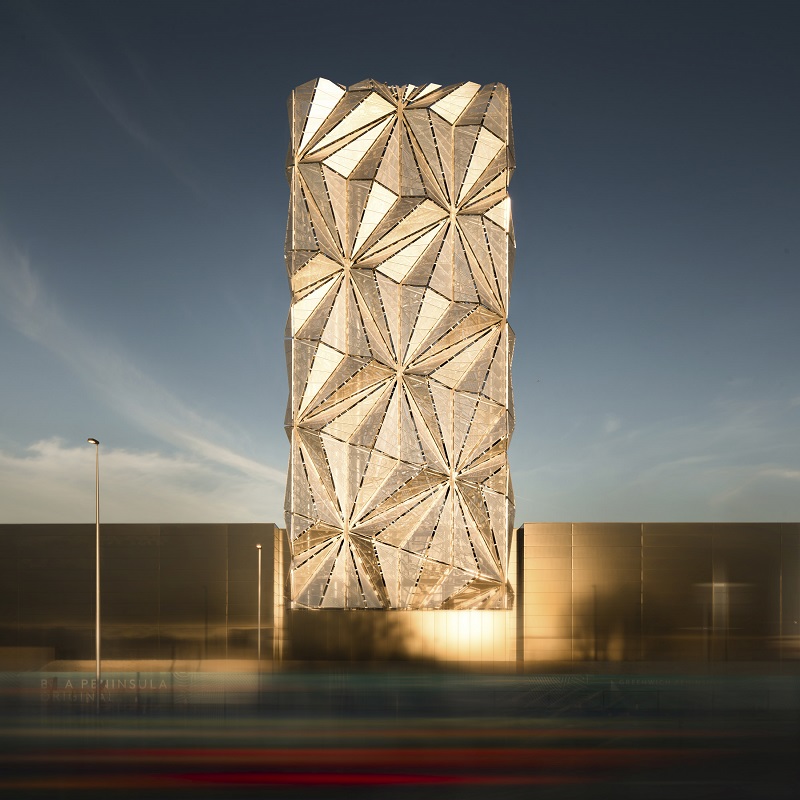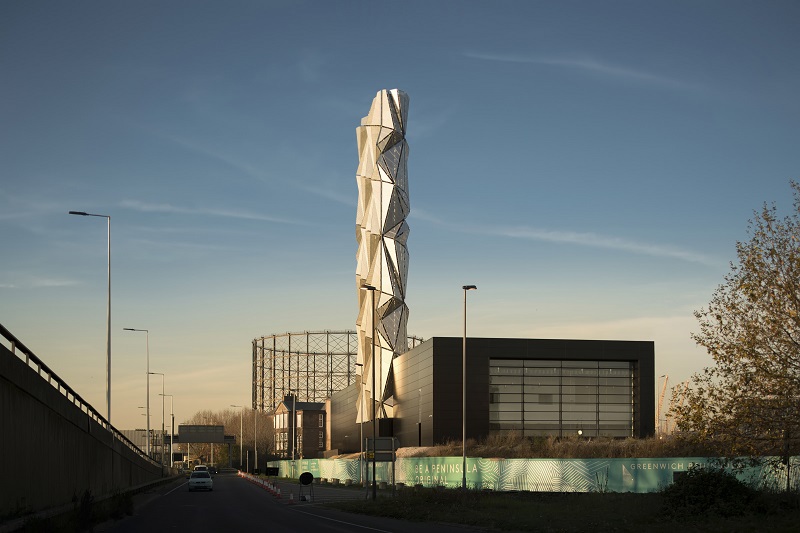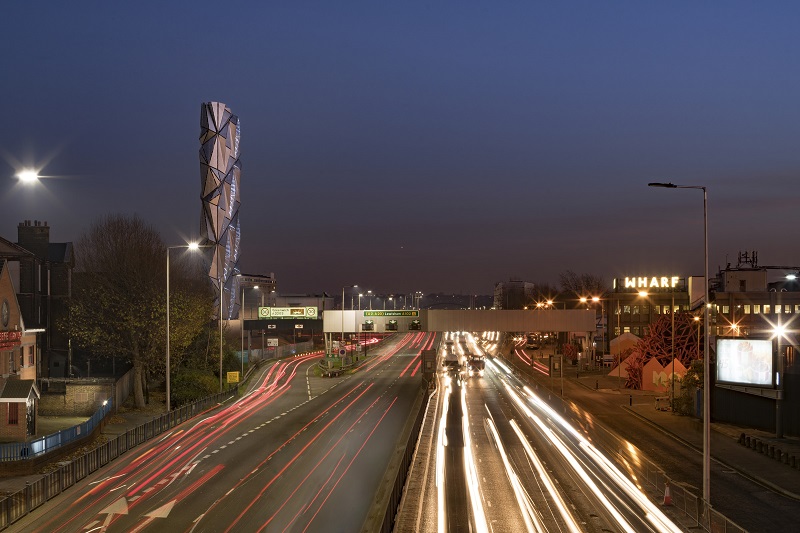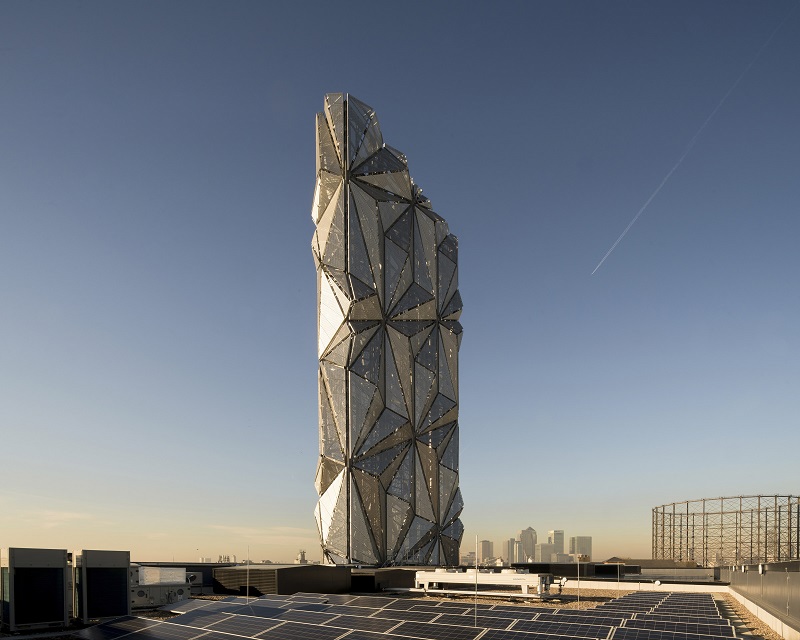Low Carbon Energy Centre, London
In March 2017, C.F. Møller Architects, artist Conrad Shawcross and developer Knight Dragon completed a major new art and architecture collaboration for London’s Greenwich Peninsula.
Measuring 3,000 sq. m, the Greenwich Peninsula Low Carbon Energy Centre is situated in a prominent location at the peninsula entrance, adjacent to the Blackwall Tunnel Approach, as a visible landmark for the area.
The Energy Centre houses advanced boilers and combined heat and power (CHP) that provides heat to the businesses and homes due to be built on the Peninsula in the coming years. The development was conceived in response to the political drive to increase the use of CHP and formed part of the Peninsula’s Sustainability Strategy.
The Energy Centre is the largest new build residential heat network in Europe, saving over 20,000 tonnes of carbon a year. Heat energy will be distributed via a District Heating Network (DHN) from the Energy Centre to each plot across the development.
Designed by British artist Conrad Shawcross, the cladding of the 49 m-high stack tower unites sophisticated engineering and complex optic research to create an impressive sculptural concept on a huge scale.
The structure’s cladding is formed from hundreds of triangular panels that fold and flow across the surface of the tower forming complex geometric patterns that visually break up the flat planes to create an uneven, sculpted surface that plays with the vanishing points and perspective.
The panels are perforated so as to exploit the phenomena of the Moiré Effect, and at night an integrated lighting design produces a shifting series of ‘compositions‘ lit from within the structure.
The work of art by Conrad Shawcross is named ‘The Optic Cloak*
The Energy Centre’s machine room and flexible ancillary office accommodation is supplemented with a Visitor Centre offering an interactive educational experience for prearranged groups.
Content and images courtesy of C.F. Møller Architects.
Photography © Mark Hadden.
[edit] Find out more
[edit] Related articles on Designing Buildings Wiki
Featured articles and news
International Electrician Day, 10 June 2025
Celebrating the role of electrical engineers from André-Marie Amperè, today and for the future.
New guide for clients launched at Houses of Parliament
'There has never been a more important time for clients to step up and ...ask the right questions'
The impact of recycled slate tiles
Innovation across the decades.
EPC changes for existing buildings
Changes and their context as the new RdSAP methodology comes into use from 15 June.
Skills England publishes Sector skills needs assessments
Priority areas relating to the built environment highlighted and described in brief.
BSRIA HVAC Market Watch - May 2025 Edition
Heat Pump Market Outlook: Policy, Performance & Refrigerant Trends for 2025–2028.
Committing to EDI in construction with CIOB
Built Environment professional bodies deepen commitment to EDI with two new signatories: CIAT and CICES.
Government Grenfell progress report at a glance
Line by line recomendation overview, with links to more details.
An engaging and lively review of his professional life.
Sustainable heating for listed buildings
A problem that needs to be approached intelligently.
50th Golden anniversary ECA Edmundson apprentice award
Deadline for entries has been extended to Friday 27 June, so don't miss out!
CIAT at the London Festival of Architecture
Designing for Everyone: Breaking Barriers in Inclusive Architecture.
Mixed reactions to apprenticeship and skills reform 2025
A 'welcome shift' for some and a 'backwards step' for others.
Licensing construction in the UK
As the latest report and proposal to licence builders reaches Parliament.
Building Safety Alliance golden thread guidance
Extensive excel checklist of information with guidance document freely accessible.
Fair Payment Code and other payment initiatives
For fair and late payments, need to work together to add value.
Pre-planning delivery programmes and delay penalties
Proposed for housebuilders in government reform: Speeding Up Build Out.
High street health: converting a building for healthcare uses
The benefits of health centres acting as new anchor sites in the high street.




























